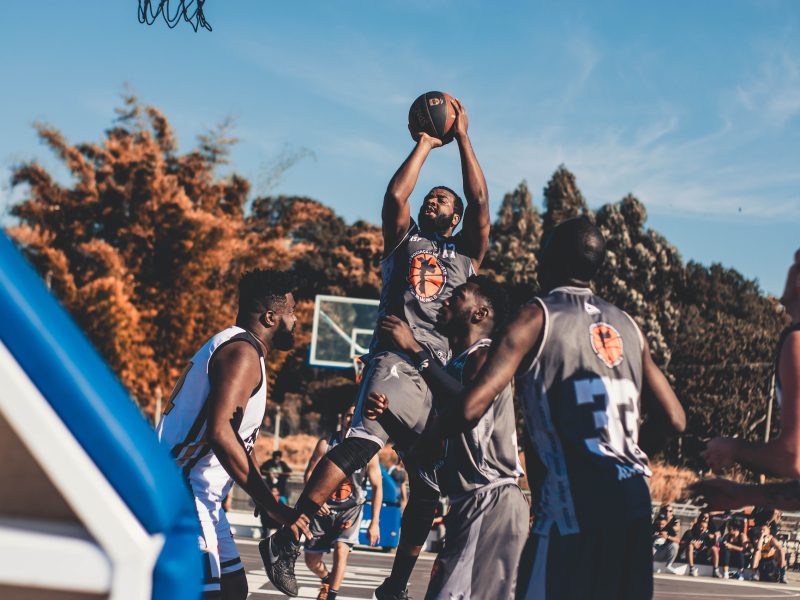
Basketball is one of the most popular sports in the world, played by millions of people of all ages and skill levels. It is a fast-paced game that requires skill, strategy, and athleticism. But to play basketball, you must first understand the rules and duration of the game. In this blog, we will explore the rules and duration of a basketball game in detail.
The Basics
Basketball is played by two teams of five players each. The objective of the game is to score more points than the opposing team by shooting the ball into their basket. The game is played on a rectangular court, with two baskets located at opposite ends of the court.
The ball used in basketball is round and made of leather or synthetic materials. It is approximately 29.5 inches in circumference and weighs between 20 and 22 ounces.
The Rules
There are many rules that govern the game of basketball, and it is essential to understand these rules before playing. Here are the most important rules of basketball:
- Dribbling: A player can only dribble the ball with one hand at a time. They cannot pick up the ball and then dribble again, also known as double-dribbling.
- Traveling: A player must dribble or pass the ball while moving. If they take more than two steps without dribbling or passing, it is considered traveling.
- Shooting: To score points, a player must shoot the ball into the opposing team’s basket. The ball must be released before the player’s foot touches the ground after receiving the ball or while jumping.
- Foul: A foul occurs when a player makes physical contact with an opposing player. The penalty for a foul can result in free throws or the ball being turned over to the opposing team.
- Timeouts: Each team is allowed a certain number of timeouts during the game. These timeouts can be used to stop the clock or to strategize with the team.
- Overtime: If the game is tied at the end of regulation time, an overtime period is played. The first team to score two points in overtime wins the game.
The duration
A basketball game is divided into four quarters, each lasting 12 minutes. There is a break of two minutes between the first and second quarters, the third and fourth quarters, and a longer break of 15 minutes at halftime.
If the game is tied at the end of the fourth quarter, an overtime period is played. Overtime periods are five minutes in length, and there is no limit to the number of overtime periods that can be played until one team wins.
The clock in a basketball game stops during timeouts, free throws, and when the ball goes out of bounds. If a team has possession of the ball during the last two minutes of the game, the clock stops after every whistle.
Strategies and Tactics in Basketball
Basketball is a game that requires a combination of individual skills, teamwork, and strategic thinking. While each team may have its own unique approach, there are a few common strategies and tactics used in basketball. In this article, we’ll explore some of the most popular ones.
Fast Break
The fast break is a strategy that involves moving the ball up the court quickly in an attempt to score before the defense can set up. The key to a successful fast break is speed and accuracy. Players need to move the ball quickly, make good passes, and take high percentage shots.
To execute a fast break, a team needs to have strong defensive skills to create turnovers or force misses. Once the ball is in their possession, players should move quickly up the court, looking for opportunities to pass the ball to a teammate who is in a good position to score.
Pick and Roll
The pick and roll is a common offensive strategy used to create scoring opportunities. It involves one player setting a pick or screen for a teammate who has the ball. The player with the ball then uses the pick to create separation from their defender, allowing them to drive to the basket or take a jump shot.
The key to a successful pick and roll is communication and timing. The player setting the screen needs to set it at the right angle and at the right time, while the player with the ball needs to read the defense and make the right decision.
Zone Defense
Zone defense is a defensive strategy that involves players guarding a specific area or zone on the court rather than a specific player. This is done to prevent the opposing team from getting easy shots or penetrating the defense.
Zone defense can be effective against teams that rely heavily on one or two players to score. It can also be used to force the opposing team to take outside shots rather than driving to the basket.
Man-to-Man Defense
Man-to-man defense is a defensive strategy where each player is responsible for guarding a specific player on the opposing team. This is done to prevent the opposing team from getting open shots or driving to the basket.
Man-to-man defense requires good communication and teamwork. Players need to be able to switch defenders when necessary and help each other out when a player gets beaten.
Full-Court Press
The full-court press is a defensive strategy that involves putting pressure on the opposing team’s ball handlers as soon as they inbound the ball. This is done to force turnovers and create scoring opportunities.
The key to a successful full-court press is speed and communication. Players need to be able to move quickly and communicate with each other to prevent the opposing team from passing the ball up the court.
Isolation
Isolation is an offensive strategy where a player is left to work one-on-one against their defender. This is done to create scoring opportunities for that player, who may have a particular advantage over their defender.
Isolation requires a player who is skilled at dribbling, shooting, and driving to the basket. It also requires good court vision from the other players, who need to be able to move into position to help if necessary.
Conclusion
Basketball is a game that requires both individual skills and strategic thinking. Strategies like the fast break, pick and roll, zone defense, man-to-man defense, full-court press, and isolation can all be effective when used correctly. However, success on the court also depends on teamwork, communication, and a willingness to adapt to changing circumstances. By understanding these strategies and tactics, players and coaches can develop a winning game plan and lead their team to victory.
